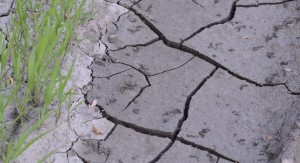Latest Posts
- Have a purpose when backyardingAugust 5 2021
- Study: Time outside alters our microbiomeAugust 4 2021
- Happy National Mutt Day from Mo-MoJuly 27 2021
- New home? Avoid these common mistakes in your yard.July 26 2021
- Infographic: Plan a backyard staycation this summerJuly 22 2021
Categories
Archive
October 4th
TurfMutt’s tips for drought communities in the East

Drought has hit the Northeast and the Atlanta, Georgia area. If you live in this part of the country, you may see reports that your lawns and landscapes are a culprit, especially if you’ve paid attention to California’s drought response. But TurfMutt says, not so fast!
Deadening a landscape ignores the important environmental and societal benefits of maintaining water-wise, living landscapes. TurfMutt wants you to know something important. You can be water wise and a good environmental steward, even under drought conditions, and still keep your grass.
It’s all about making wise choices about green space, including rainwater harvesting, planting climate-appropriate landscapes, and using ordinary, drought-tolerant grass to capture and filter rainwater.
Here are TurfMutt’s top 5 tips for drought-stressed communities.
Tip #1: Don’t be drought shamed! Learn the benefits of your landscape. Ordinary grass, like what’s in your lawn, provides a host of benefits: dissipating heat through a process called evapotranspiration, cooling urban “heat islands,” producing oxygen (a turf area 50′ x 50′ will produce enough oxygen to meet the daily needs of a family of four!), sequestering carbon, capturing and filtering water, and much more.
Tip #2: Plant the right grass, shrubs, trees and flowering plants. Hundreds of varieties of turfgrass exist, and some of them are perfect for drought conditions. When established, these grasses require very little water and will survive foot traffic, children’s play and pets. When rains return, these grasses will help capture the water and absorb it into the soil, limiting storm water runoff and feeding underground aquifers.
Tip #3: Add pollinator plants. Your yard is an ecosystem, providing habitat and food for our pollinators, like butterflies, bees and hummingbirds.
Tip #4: Mix native plants and drought-resistant adaptive plant and grass species. We don’t live in a native environment. Our cities and suburbs are man-made, built environments. It’s vitally important to mix green space with both native and adaptive plants so they will survive and provide environmental benefits to people, pets and wildlife.
Tip #5: Know your climate zone. One size does not fit all! Identify your climate and micro-climate zones and plant more plants that do well in your area. The USDA Plant Hardiness Zone Map is an important resource.
One final note: People receive health benefits from green space. According to a systematic research review, “the balance of evidence indicates conclusively that knowing and experiencing nature makes us generally happier, healthier people.”
To learn more about the importance of living landscapes, especially in a drought, go to LivingLandscapesMatter.com.





